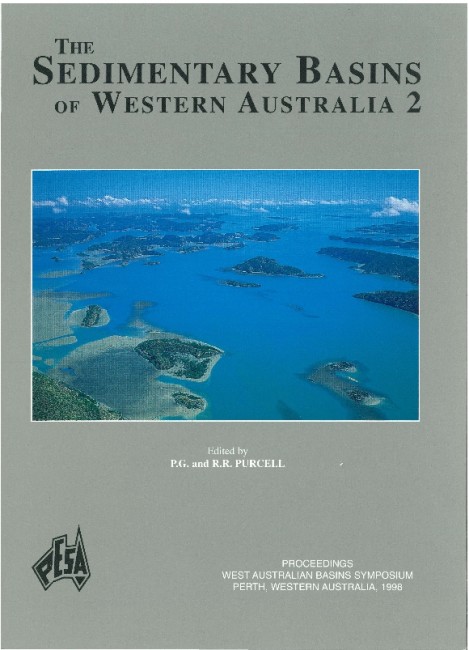Publication Name: The Sedimentary Basins of WA
Authors: Arthur J. Mory, Robert P. Iasky and Sergey I. Shevchenko
Publication Volume: 2
Date Published: December 1998
Number of Pages: 21
Reference Type: Book Section
Abstract:
The Coolcalalaya Sub-basin is bound by the Darling Fault to the east and the Ajana-Yandi and Urella faults to the west. The only petroleum data are gravity and aeromagnetics from the 1960s and 1970s, and one seismic line shot in 1964. More than eighty water and mineral exploration bores, up to 300 m deep, provide the best geological control for the sub-basin; there is little outcrop. The sub-basin deepens eastwards, to a maximum of 8500 m of ?Ordovician to Permian strata next to the Darling Fault. As in the Perth Basin, movement along the Darling Fault dominated the depositional history of the sub-basin but, unlike that basin, this history commenced prior to the Permian. The three most significant episodes of tectonism were lower-mid Palaeozoic rifting, Permo-Carboniferous rifting, and Lower Cretaceous breakup, which possibly produced gentle folds associated with strikeslip movement along northerly trending faults.The ?Ordovician-Lower Carboniferous section is estimated to be up to 4500 m thick, and is the most crucial for the petroleum potential of the area. The overlying Permo-Carboniferous glacial strata have, at best, sealing potential, and although the younger Permian succession has good source rock characteristics, it is confined to shallow synclines in the north of the sub-basin. Spore colouration and vitrinite reflectance data indicate that the near surface rocks over most of the sub-basin have a low level of maturation and, because these rocks are Devonian and older to the southwest, considerable depositional thinning of the Permo-Carboniferous towards the Northampton Complex may be inferred. The highest measured total organic carbon value from the Devonian is 0.82%, but generating potential is low.
On the available data, the sub-basin remains a poorly explored frontier area with low potential. Minor investment in shallow drilling, however, should provide more information on its potential for hydrocarbon generation.


